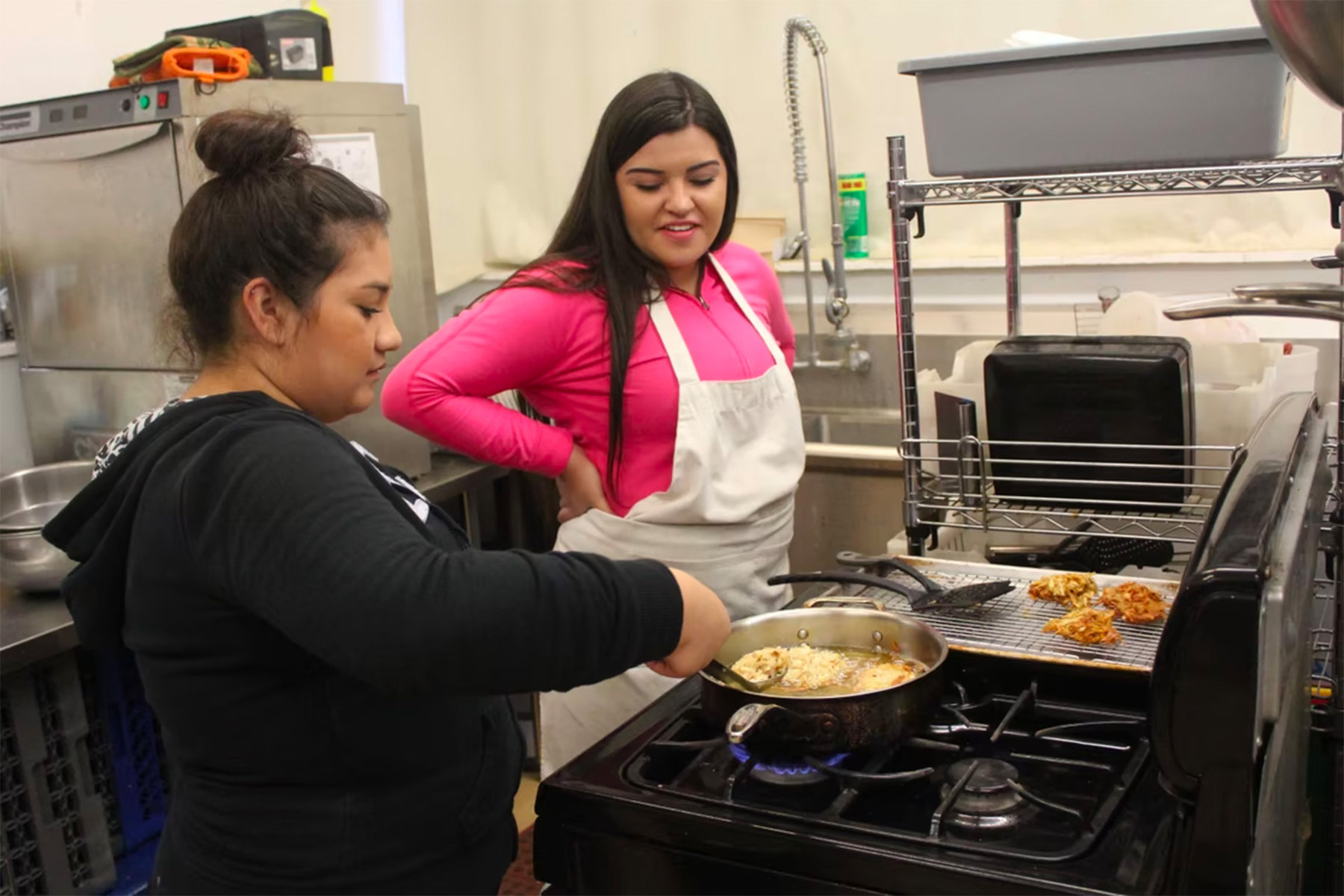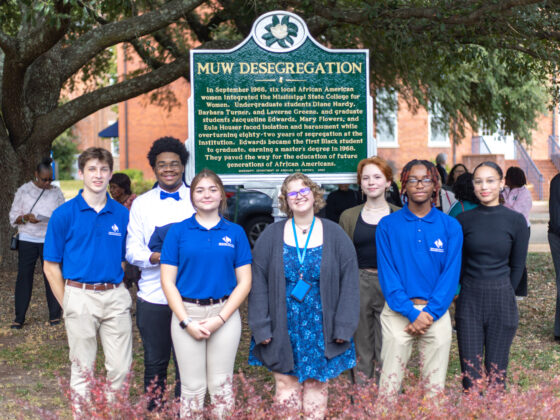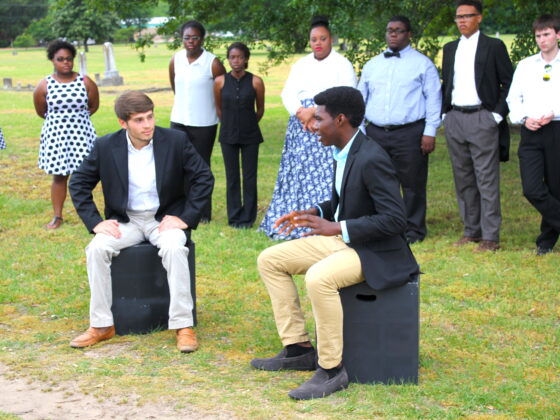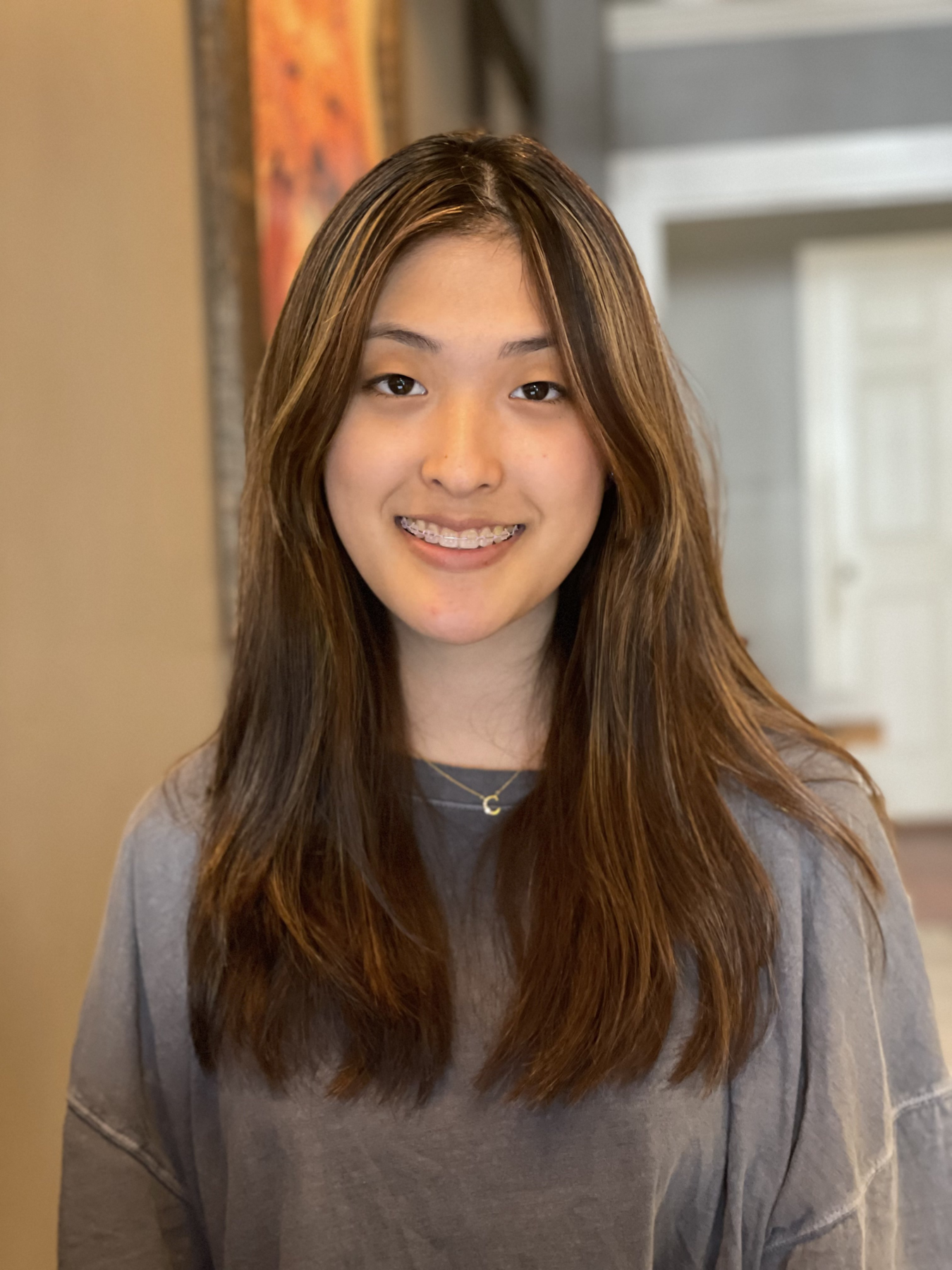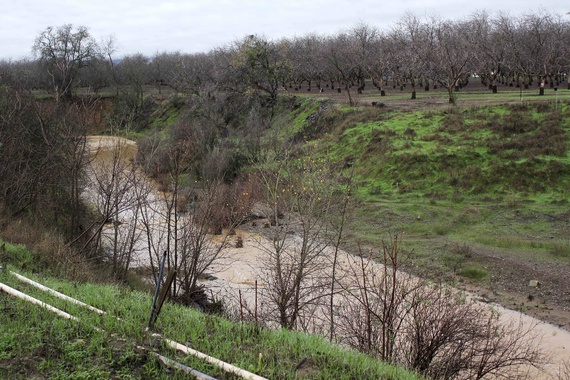
Formerly dry creekbed full after the rains
Besides growing nuts, area farmers grow stone fruit, grapes for wine, olive trees, gorgeous vegetables and citrus. The famous agriculture campus at the University of California at Davis is east of Winters about 12 miles. Winters is bigger than nearby Esparto, with its small but casino-wealthy Native American tribe (which is a strong supporter of its public library, by the way) some 15 miles north. And it is way bigger than Yolo, population 450 and 25 miles to the northeast, also appropriately (and perhaps affectionately) referred to as Little Yolo, to distinguish it from the surrounding Yolo County. Driving from one town to another, you pass groves, fields, storage silos and distribution centers.
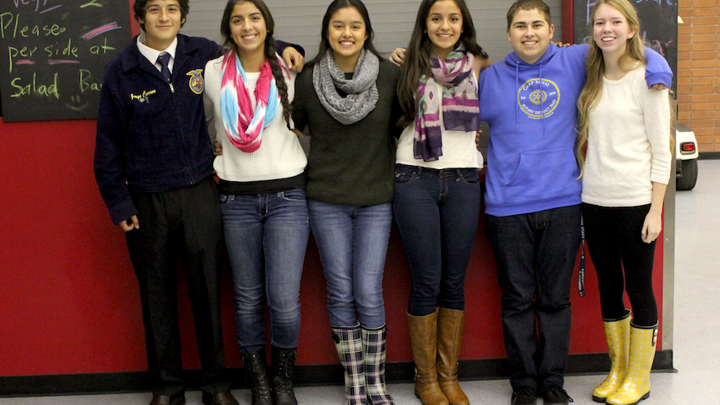 Upperclassmen at Winters High School (Photos by Deborah Fallows)
Upperclassmen at Winters High School (Photos by Deborah Fallows)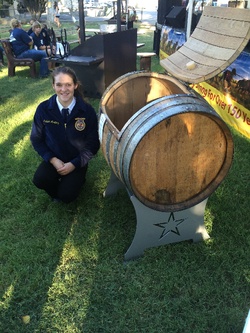
A student with her wine barrel cooler
I visited the off-campus “Ag site,” named for Joe Aguiar, the father of the mayor of Winters, Cecilia Aguiar-Curry, just a few blocks from the main high school. It is set in a big warehouse space, next to the farm fields (which were so soggy that we had to save a visit for a dryer day). The students grow tomatoes, pumpkins, and ryegrass, grapes, almonds, peaches, and plums. Next year, with the help and guidance of local farmers, they are planning to start an almond orchard.
One group of freshmen was busy making black walnut and maple cutting boards, of which many would probably find their way under Winters’s Christmas trees.
Two other students gave me a demo of their welding, and Principal Paul Fawcett walked me through the computer aided design systems that students could program to make metal items.
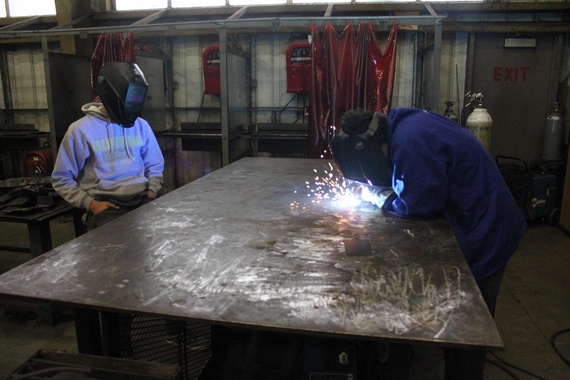
Students welding at Winters High School
The products the students created and made were impressive: industrial-size barbeque smokers, fire pits, outdoor metal house decorations, coolers made from wine barrels, lighting for the school football field. Winters students regularly excel in FFA speaking competitions as well. In such a small school, students become renaissance people of sorts: a cheerleader who welds firepits; a valedictorian-ballerina who wins honors at the FFA speaking contest.
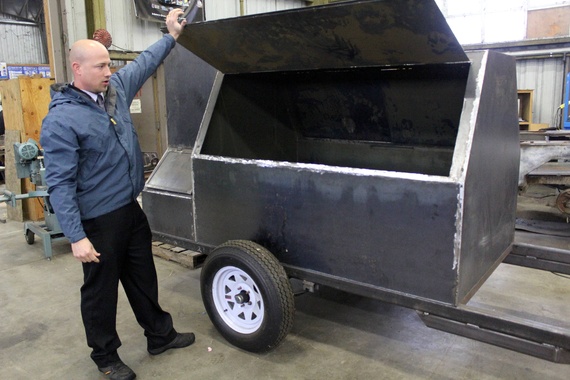
Principal Paul Fawcett with a barbeque made by one of the students
Back at the high school, I talked with half a dozen seniors and a junior in the school’s small cafeteria about life in their small town, their school, and their families. Having visited many schools by now, along our American Futures journey (see here, here, here, here, and here for contrast) I was struck by a few distinctive characteristics of students in Winters: how reflective they are about their sense of themselves as a bonded community of classmates, and what growing up in their small town has imprinted upon them.
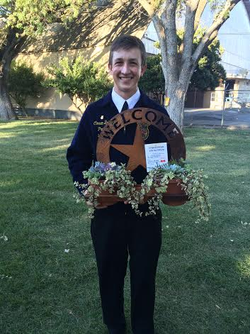
I was struck by a kind of judgment-free nature of these kids. They come from a variety of socioeconomic beginnings and upbringings: children of custodians and professors, of fruit packers, warehouse workers, librarians, mechanics, corrections officers, and managers. Some knew exactly what their parents did for a living, and others weren’t quite sure of the companies where their parents worked. Some lived in blended families; others not. They were of means or of very little means. Some were first-generation Americans, and others’ families went very far back. All this was described in candid terms; they all seemed to know most everything about each other already; none seemed to express any judgment one way or another on each other’s comments. This struck me as a rare expression that can’t be taught but must simply be experienced to attain.
Being high schoolers, the kids also had a wry sense of their life in small-town Winters. They could detail all the changes: “It was a big deal when they took out the blinking light and replaced it with a stoplight!” one described, detailing the ceremony involved, with much of the town in attendance. And “Dollar General is coming! And a hotel!”
“There used to be cool things here,” one said, and they all added to the list: a train, a movie theater, bowling. The students described their school as the proxy for all those experiences now. “School activities keep us real busy,” they agreed.
The students also chronicled the improvements in the schools on their watch: younger kids getting iPads, advisories in the middle school. And they decried that they would miss the renovation of the high school (sorely needed to the 60-year-old structure.)
There is more improvement to come. Paul Fawcett outlined some of the prospects underway: cooperation with Solano Community College, just up the road, to have a presence on campus, which would offer courses to the high school students (and other town residents) for college credits; a greenhouse for the ag programs.
With its sense of itself, its big dreams, aggressive funds-seeking, committed faculty, smart, nice students, and supportive community, Winters High School is an impressive public high school.

